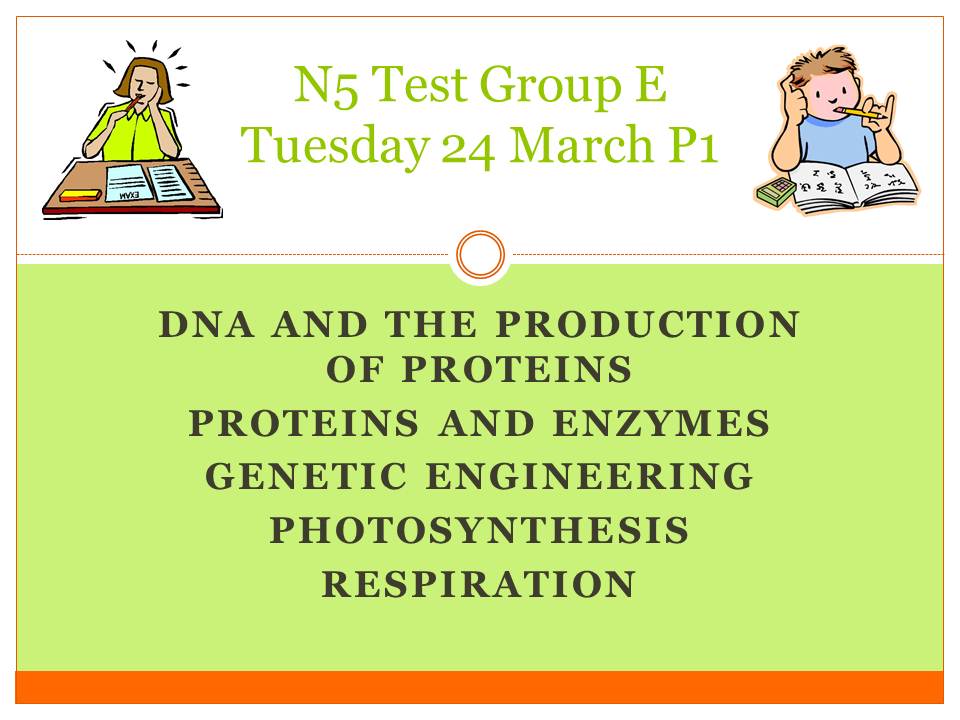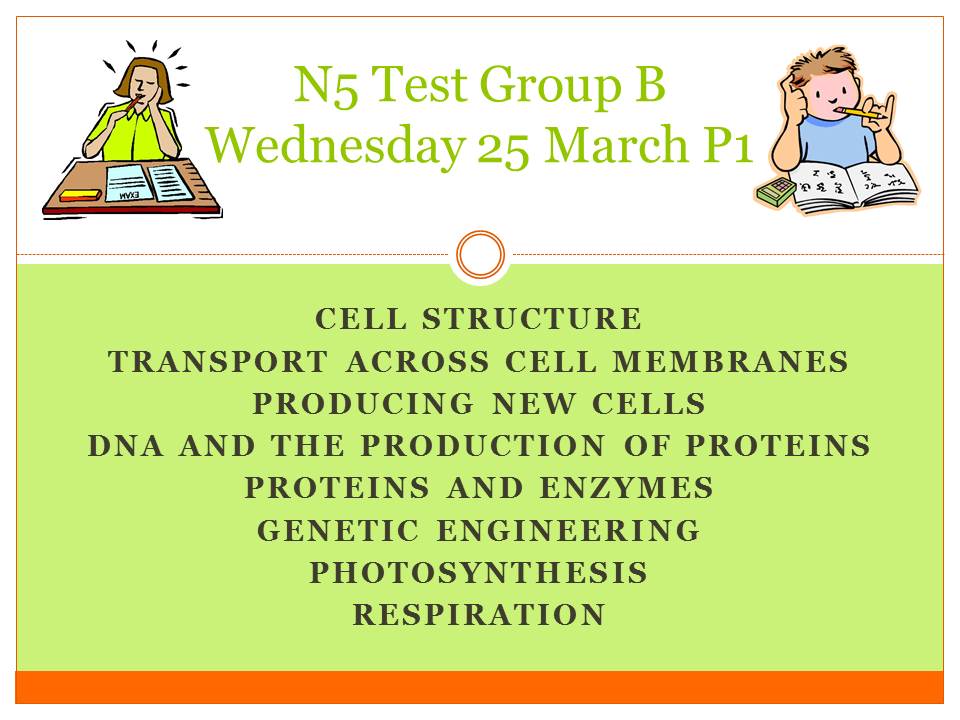Proteins and Enzymes
a. The variety of protein shapes and functions arises from the sequence of amino acids.
b. Functions of pro teins to include structural, enzymes, hormones, antibodies and receptors.
c. Enzymes function as biological catalysts and are made by all living cells. They speed up cellular reactions and are unchanged in the process. The shape of the active site of an enzyme molecule is complementary to its specific substrate(s). Enzyme action results in product(s). Enzymes can be involved in degradation and synthesis reactions. Examples should relate enzymes to their specific substrate(s) and products(s)
d. Each enzyme works best in its optimum conditions. Enzymes and other proteins can be affected by temperature and pH. Enzymes can be denatured, resulting in a change in their shape which will affect the rate of
reaction.
Control and Communication
Homework
Choose the correct answer in each sentence and write it into your book. I am not asking you to write the full sentence, just the correct word, ready for next lesson.
a) Evvironmental stimuli are detected by receptors/effectors.
b) Responses to nerve impulses are brought about by receptors/effectors.
c) The first nerve cell in a reflex arc is called a motor/sensory neurone.
d) The final nerve cell in a reflex arc is called a motor/sensory neurone.
e) An electrical impulse is transmitted towards the cell body of a neurone by an axon/sensory nerve fibre.
f) An electrical impulse is carried away from the cell body of a neurone by an axon/sensory nerve fibre.
g) The gap between two neurons is called a synapse/association neurone.
h) A response made by a skeletal muscle is normally faster/slower than that made by a gland.
i) A rapid, automatic, involuntary response to a stimulus is called a reflex arc/action.
j) Chemical messengers secreted directly into the bloodstream are called enzymes/hormones.
k) Cells on a target tissue bear specific receptors/effectors for a particular hormone.
l) Insulin and glucagon are made in the liver/pancreas.
m) The conversion of glucose to glycogen in the liver is promoted by glucagon/insulin.
n) The conversion of glucogen to glucose in the liver is promoted by glucagon/insulin.
a) Evvironmental stimuli are detected by receptors/effectors.
b) Responses to nerve impulses are brought about by receptors/effectors.
c) The first nerve cell in a reflex arc is called a motor/sensory neurone.
d) The final nerve cell in a reflex arc is called a motor/sensory neurone.
e) An electrical impulse is transmitted towards the cell body of a neurone by an axon/sensory nerve fibre.
f) An electrical impulse is carried away from the cell body of a neurone by an axon/sensory nerve fibre.
g) The gap between two neurons is called a synapse/association neurone.
h) A response made by a skeletal muscle is normally faster/slower than that made by a gland.
i) A rapid, automatic, involuntary response to a stimulus is called a reflex arc/action.
j) Chemical messengers secreted directly into the bloodstream are called enzymes/hormones.
k) Cells on a target tissue bear specific receptors/effectors for a particular hormone.
l) Insulin and glucagon are made in the liver/pancreas.
m) The conversion of glucose to glycogen in the liver is promoted by glucagon/insulin.
n) The conversion of glucogen to glucose in the liver is promoted by glucagon/insulin.


